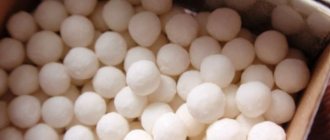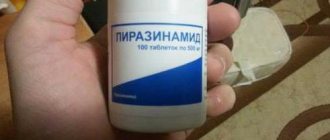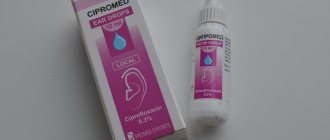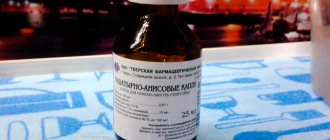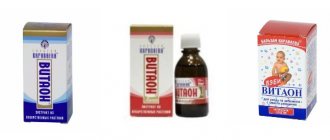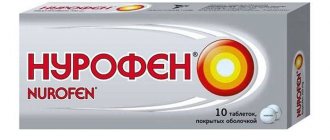Home / Health
Back
Published: 10/28/2019
Reading time: 18 min
0
4180
5 / 5 ( 2 voices)
Succinic acid occurs naturally in most vegetables and fruits, as well as in amber. It is used in cosmetology, the chemical industry, as a food additive and ... one of the main ingredients of hangover dietary supplements. The drug can be bought at any pharmacy without a prescription and its price is relatively inexpensive.
Succinic acid is used in the production of cosmetics, oral hygiene fluids, perfumes, varnishes, paints and inks. It also supports alcohol metabolism, which has made it a major component of dietary supplements to mitigate the effects of alcohol poisoning (dietary hangover supplements also include fumaric acid, vitamin C, and glucose, among others).
Succinic acid is also one of the substances used in food production. Used as a salt substitute, added to powdered soups, baking powder, broths, desserts and breakfast cereals. In the food industry it is designated as food additive E363.
- What is succinic acid
- Succinic acid: indications for use
- The use of succinic acid in cosmetology Why it is beneficial for the skin of the face and body
- Application for hair
- Instructions for use and dosage
Daily requirement
Without succinic acid, the human body cannot exist. Interestingly, the compound and its derivatives are participants in metabolic processes, an intermediate product of the reaction of saccharides, complex fats, and proteins. Every day, the human body produces 200 grams of acid per day, which is used to maintain life cycles.
The interaction of succinates with oxygen is accompanied by the release of a large amount of energy necessary to accelerate metabolism and maintain physical activity.
To determine the body's daily need for succinic acid, a person's body weight must be multiplied by 0.03 grams. The resulting product will be considered an individual norm recommended for daily use.
Interestingly, succinic acid does not cause addiction or allergies, because it is present in the human body almost all the time. Studies have shown that the compound is a natural adaptogen. It increases the body's resistance to adverse environmental influences.
Factors that increase the need of internal organs for succinic acid:
- Colds. They create an additional burden on the human immune system. Therefore, during illness, acid consumption should be increased.
- Sport. The amber supplement stimulates the endocrine system and promotes rapid recovery of muscle tissue after intense training.
- Hangover. Additional intake of the compound facilitates the functioning of the liver and kidneys and promotes detoxification of the body.
- Allergy. Consuming succinic acid reduces the production of natural histamine.
- Heart failure. The product supplies myocardial cells with additional energy.
- To stimulate brain function (improves oxygen supply).
- Chronic fatigue syndrome.
- Skin problems (dermatitis, acne, inflammation).
- Diabetes.
- Excess body weight.
- Old age, when the body loses the ability to independently replenish the level of succinic acid.
The need for connection is reduced when:
- hypertension;
- urolithiasis;
- glaucoma;
- individual intolerance;
- duodenal ulcer;
- coronary heart disease;
- hypersecretion of gastric juice.
Thus, the daily need for succinic acid directly depends on the energy and labor costs of the body. The most complete absorption of the compound is achieved through proper nutrition, proper daily routine, and optimal physical activity. If these factors are observed, succinic acid is maximally absorbed in the human body.
Beneficial features
Since ancient times, people have worn jewelry made of amber resin, which was believed to protect its owner from evil spirits and heal from illnesses. The miraculous properties of the sun stone are still known today. However, not everyone knows that succinic acid, which improves health and strengthens the immune system, is to blame.
Ancestors used amber to slow down the aging process and rid the body of ailments. In the twentieth century, scientists seriously began to study the healing properties of the compound. As a result of research, doctors discovered that acid removes toxins from the body, increases its resistance to infectious diseases, relieves hangover syndrome, and restores the functioning of internal organs, especially after irradiation.
Useful properties of succinic acid:
- Regulates cellular respiration, promotes the rapid movement and absorption of amino acids, vitamins, minerals, which ensures the strengthening and normal functioning of body tissues.
- Normalizes the functioning of the adrenal glands and hypothalamus.
- Reduces the harmful effects of stress, restores the nervous system.
- Increases body tone, improves concentration, gives strength, vigor, and increases labor productivity.
- Strengthens the body's protective reserve, helps resist viral diseases and nervous disorders.
- Maintains water-salt metabolism within normal limits, accelerates fat burning, allows you to lose extra pounds, maintaining body weight at the desired level.
- Absorbs dangerous toxins, including after ethyl poisoning.
- Fights colonies of pathogenic bacteria in the intestinal flora.
- Improves blood circulation.
- Prevents the growth of tumor cells.
- Regulates the functioning of the heart muscle and normal cholesterol levels in the body.
- Fights feverish conditions, inflammation, swelling.
Thus, succinic acid has anti-inflammatory, antioxidant, tonic, restorative, antiviral, strengthening, antihypoxic and antiallergic effects on the human body.
Indications for use
Succinic acid is an intracellular metabolite of the Krebs cycle. The substance plays an important energy-synthesizing role. Under the influence of succinate dehydrogenase with the participation of coenzyme FAD, the compound is biotransformed into fumaric acid, metabolic products. In addition, it activates electron transport in mitochondria, which improves tissue respiration.
The widespread use of succinic acid in medicine is due to its ability to increase gastric gland secretions, diastolic blood pressure, improve muscle contractility, and stimulate adaptive, compensatory and protective functions of the body. When taken orally, the compound penetrates from the gastrointestinal tract into the tissues and blood and enters into catabolic reactions. Complete breakdown of succinic acid to the final products of metabolism (water, carbon dioxide) occurs within half an hour.
Indications for use of the compound in the form of a dietary supplement:
- Nervous disorders, depression, severe stress, anxiety - to reduce irritability and relaxation.
- Working with devices that emit an electromagnetic field - to neutralize the harmful effects of waves in a dangerous range.
- Weakness, emotional stress, increased fatigue - to increase vitality and energy.
- Increased blood clotting - to eliminate the likelihood of thrombosis.
- Disorders of the stomach and intestines, to normalize the microflora.
- Respiratory diseases (asthma, bronchitis) - to remove mucus from the bronchi and relieve swelling.
- As an adjuvant for venous diseases - to normalize blood flow and strengthen the walls of blood vessels.
- Work that requires strong mental stress - to speed up thought processes, reaction, and intelligence.
- When planning pregnancy - to stimulate the reproductive function.
- Taking antibiotics - to reduce the likelihood of side effects from the drug.
- Increased physical activity, cardio training to speed up metabolism and recharge your energy.
- Swelling, inflammation - to fight pathogens, remove excess water from the body, relieve fever.
- Diets - to restore water-salt balance, accelerate the fat burning process, compensate for the lack of minerals with a limited diet.
- Physical inactivity – to eliminate signs of oxygen deficiency in the body (increased fatigue, tinnitus, headache).
- Endocrine diseases - to reduce the concentration of glucose in the blood, normalize the activity of the thyroid gland.
- Toxicosis during pregnancy (up to 18 weeks inclusive) - to prevent dehydration, compensate for the deficiency of antioxidants, and improve the absorption of nutrients.
- ARVI, influenza during the season - to mobilize immune forces.
- Alcohol intoxication - to normalize blood pressure, remove toxic breakdown products of ethyl alcohol, improve well-being, maintain water-salt balance.
- Gynecological diseases - to relieve inflammation, improve tissue regeneration.
- Cosmetology – for skin rejuvenation, activation of metabolic processes, restoration of hair structure.
- Heart disease – for better supply of coronary vessels.
Thus, succinic acid has a wide spectrum of action, due to which it has a beneficial effect on the functioning of all body systems and internal organs, without causing discomfort or addiction.
Harm and contraindications
Despite the uniqueness of this natural component, succinic acid, as a dietary supplement, cannot be taken by everyone.
Contraindications to use of the compound:
- Gastric ulcer, especially during exacerbation. Taking succinic acid will increase the secretion of gastric juice, which will aggravate the painful condition.
- Urolithiasis (urolithiasis). When entering the body, the supplement accelerates metabolic processes, which entails the progression of the process of stone formation.
- Hypertension. Acid stimulates blood circulation, which leads to an increase in blood pressure and aggravation of the patient’s condition.
- Take the supplement at night (less than an hour and a half before bedtime). The compound has a tonic effect on the body and improves human brain activity; using the drug at a late time causes insomnia and increased excitability of the nervous system.
- Individual intolerance to a medicinal drug. Hypersensitivity to the components of succinic acid can cause the development of a severe allergic reaction requiring hospitalization.
- Angina pectoris. To avoid pain and complications of the disease (heart block, myocardial infarction, arrhythmia), it is recommended not to create an increased load on the heart muscle, which is caused by taking an organic compound.
- Severe form of late gestosis.
- Eye diseases, in particular glaucoma.
- Renal dysfunction.
Although succinic acid is not a medicine, consult your doctor before taking a supplement. Any self-medication is contraindicated, since if the dosage is incorrect, the drug can harm human health.
Benefits for the body
Before giving your child succinic acid, you need to understand what it is and how it affects the body. This is an organic acid that is found in every cell of our body. The body itself is capable of producing it. Succinic acid is involved in energy production, thanks to which you and I can live normally. Stress and illness lead to a decrease in energy production, which, in turn, leads to aging of the body.
An additional portion of succinic acid for a child and an adult can be very beneficial. This is not a medicine, but rather a stimulant, the use of which does not carry any risks. An increased concentration of this substance becomes a natural regulator for improving the functioning of the body.
What are the dangers of deficiency and overdose?
In the human body, the deficiency of succinates directly depends on the growth of megacities and the environmental situation. The larger the city and the worse the environmental condition, the greater the amount of succinic acid required to maintain the vital functions of internal organs and systems.
Reasons for lack of succinates in the body:
- nervous, stressful situations;
- emotional, physical stress;
- difficult environmental situation;
- technogenic factors;
- high level of noise pollution in the city.
When these factors occur, the human body begins to consume succinic acid in increased quantities. As a result, 200 milligrams of the compound produced by the internal organs to maintain the life cycle becomes insufficient, and tension appears in the metabolic chain.
Signs of a compound deficiency:
- weight gain;
- “accelerated” aging process;
- decreased immunity;
- fast fatiguability;
- poor brain function;
- lack of energy;
- weakness;
- decreased performance;
- skin problems.
Consequences of a lack of succinic acid in the body:
- general malaise;
- decreased tone;
- prostration;
- slow reaction to external stimuli;
- formation of free radicals.
An overdose of succinic acid in the body is extremely rare. With an excessive intake of the compound with drugs, the gastric mucosa becomes inflamed, the condition of the tooth enamel worsens (microcracks appear on it), and urolithiasis and ulcers worsen.
If acid vapors are inhaled or the liquid gets into the eyes or onto the skin, it does not pose a threat to human health. May cause irritation and allergic reaction. If the compound gets into your eyes, the affected area should be rinsed with water for half an hour; if you are poisoned by vapors, go out into fresh air, then consult a doctor.
Signs of deficiency
Typically, this supplement is prescribed to improve the overall health of the body. How do you understand that there is a deficiency of succinic acid in the body? Instructions for use for children recommend prescribing it in the following cases:
- If a child is often sick, the functioning of certain body systems occurs.
- Energy is quickly lost. As a result, there is a loss of strength, forgetfulness and chronic fatigue.
- Meteosensitivity increases.
Succinic acid affects almost all organs. Its deficiency will lead to a deterioration in the functioning of the entire body as a whole. First of all, the immune system will suffer. This will affect resistance to various infections. Additionally, brain activity will decrease. In preschool and primary school age, every day matters. If a child cannot develop due to health reasons, he will lag behind his peers. If this continues for some time, free radicals will accumulate in the body, and this will lead to loss of energy and performance.
The effect of succinic acid on pregnancy
During pregnancy, it promotes the correct restructuring of the hormonal system, strengthens the immune system, and prevents toxicosis in the expectant mother.
Thanks to the ability to influence cellular respiration, succinic acid ensures a complete supply of oxygen and nutrients to the baby and protects the embryo from toxins, viruses, and bacteria.
Numerous studies have shown that regular intake of an organic compound during pregnancy halves the risk of developing gestosis, minimizes the likelihood of complications, and facilitates labor.
In addition, succinic acid potentiates milk production in the mother during lactation and is effectively used to protect the female body from colpitis, cervical erosion, ovarian cysts, fibroids, fibroids, endometriosis, and mastopathy. The compound is used in the treatment of infertility associated with adhesions in the pelvis. The healing effect of amber is based on its “absorbing” function, inhibition of pathological cell division. Acid improves blood circulation and increases energy exchange in tissues. Thanks to this, the body’s recovery occurs faster and treatment is more effective.
Succinic acid will help prepare a woman’s body in advance for bearing a child. Regular intake of a dietary supplement at the stage of pregnancy planning will strengthen the health of the expectant mother, give a joyful feeling of life, add strength, reduce fatigue, lay the foundation for the health of the baby, and relieve toxicosis. As a result, the “interesting situation” will be endured as comfortably as possible, without suffering and painful adjustments.
general description
Transparent amber glowing in the sun has always interested people. Healing and even magical properties were attributed to him, and they were applied to sore spots. You can laugh at our ancestors, but the healers of the past were very observant and often made the right conclusions. Powder made from this stone was previously used as a means of supporting the body's strength. Modern industry produces a product of its processing, which is called succinic acid. It is prescribed to children and adults for the treatment of a wide range of diseases.
Succinic acid in medicine
There are the following forms of release of the drug:
- tablets (active ingredient content: 0.1 grams/piece);
- powder (the amount of succinic acid in the preparation depends on the packaging volume).
The dosage and method of using the supplement depend on the purpose of use.
To strengthen the body, improve well-being, and normalize the functioning of internal organs, the standard course of therapy is to take one gram of powder or one tablet of succinic acid per day for a month. If there is no positive dynamics after the end of the course, the daily dose should be tripled. It should be divided into three times and taken at equal time intervals. An important condition is to take a break for a day every three days. This will relieve the body and avoid overdose.
Regimen for taking the supplement depending on the purpose:
- To neutralize lactic acid and quickly restore muscles after intense sports, it is recommended to take a solution of succinic acid (dissolve three grams of powder in 200 milliliters of water) or four tablets of the compound.
- For myositis, to relieve inflammation, you need to take two tablets of the compound three times a day for a week.
- For hypertension, succinic acid is administered intravenously through a dropper, observing the proportions: 35 milligrams of the substance per kilogram of the patient’s body weight.
- To relieve symptoms of alcohol intoxication, take 5 carbon compound tablets during the day, one each hour.
- For toxicosis, succinic acid is prescribed half a tablet daily.
- As an auxiliary component to the main treatment, succinates are used for cancer. The recommended daily dose of succinic acid is 5 – 10 tablets, depending on the patient’s condition. In severe cases, it increases to 20 tablets per day. For maximum absorption of the drug, it is recommended to combine it with freshly squeezed berry and fruit juices.
- To ease the well-being of patients with atherosclerosis of the vessels of the lower extremities and coronary heart disease, it is recommended to take succinic acid 2 times a day, 1 tablet after meals. Including the drug in the diet reduces the severity of shortness of breath, swelling, pressure surges, and the frequency of angina attacks.
- For acute respiratory viral infections, succinic acid is taken in the first days of disease progression, 3 tablets 1-2 times a day. Taking the compound in high doses helps to abort the infection, quickly improve health, and complete recovery in 2 to 3 days. The drug should be taken with caution, as it can cause a sharp increase in body temperature for a short period of time. Therefore, if the patient’s temperature has already reached 38 degrees, in order to avoid worsening the condition and increasing t to a critical level, it is undesirable to use succinic acid.
- For obliterating atherosclerosis, deforming osteoarthritis, chronic venous insufficiency and osteochondrosis, succinic acid, in combination with the main treatment, is taken 1 tablet twice a day. The compound improves the condition of the joints, reduces the severity of pain, and restores sensitivity in the limbs.
Succinic acid is used in geriatrics to treat older people. It is known that after 60 years, the production of energy in cells and the metabolic rate slow down in pensioners, which causes a deterioration in the functioning of organs and dystrophic changes in them. Succinic acid slows down the rate of aging processes in the body, supports the functioning of all tissues and systems at a “younger” level. In addition, it activates energy production, metabolism, increases life expectancy, improving its quality.
Due to its “rejuvenating” effect, acid is recommended to be taken in regular courses by all persons over 55 years of age. Duration of therapy is 1 – 2 months. Taking one tablet of succinic acid daily immediately after a meal will strengthen the immune system and slow down aging changes in the body.
For children
The supplement is not recommended for babies in their first year of life. If the mother breastfeeds him and takes succinic acid, the baby will receive it along with the milk. And for artificial babies, they enrich their milk formulas with it. Of course, it is difficult to overdose on it; it does not accumulate in the body. But it’s still better to follow your doctor’s recommendations.
Experts recommend giving acid during the cold season for prevention. In case of decreased immunity or bronchopulmonary diseases, the supplement can provide very significant help. The dosage is as follows:
- Children under 5 years of age are prescribed 0.5 tablets 2-3 times a day.
- At the age of 5 to 12 years - no more than one tablet 2-3 times a day.
As a result, many seasonal ailments can be avoided. And if a child gets sick, the condition usually returns to normal much faster.
Succinic acid and oncology
Currently, scientists have come to the conclusion that the cause of the development of a malignant tumor is not a mutation of cells, but the improper functioning of mitochondria, which changes their metabolism and energy exchange. Researchers have differing opinions on this matter. Half of the scientists believe that this process is reversible and, under the influence of a large amount of fruit acids, cancer cells can be restored to their original appearance and health. Other adherents of the "classical theory" argue that this is impossible.
Thus, a group of scientists who founded the theory of restoration of modified cells, in the course of research, found that fruit acids normalize the state of damaged mitochondria. As a result, the growth of cancer cells and tumors stops.
In the process of laboratory research, it was found that succinic acid and its component DCA stimulate the mitochondrial enzyme. Due to this, the growth of cancer cells is reduced without the inhibitory effect of the compound on healthy cells.
According to the Institute of Biophysics of the Russian Ministry of Health, in a group of patients with cervical and colon cancer, after regular administration of succinic acid, a vitamin-mineral complex of plant origin in the diet, a strict diet, and a daily routine, mortality decreased by 80%.
Among patients with ovarian cancer, the number of deaths after intensive treatment with succinates and medicinal herbs decreased by 90%, with a breast tumor - by 60%.
Based on experimentally obtained data, scientists came to the conclusion that succinic acid slows down the growth of malignant tumors. An integrated approach to treating cancer using standard methods (chemotherapy, radiation, surgery) with the addition of succinates to the basic diet triples the chances of recovery. In addition, succinic acid eliminates toxicoses that accompany oncology throughout the entire period of treatment.
Chemical composition
Pediatricians confirm that in most cases, succinic acid can be given to children without fear. Only rarely, if there are strict contraindications, should the course of treatment with the “sunstone” be postponed or completely canceled. The benefits of the drug are due to its chemical composition. Of course, a stone cannot be called an organism, but in composition it is close to a living creature. This is a combination of organic acids, many minerals and other useful substances. In other words, everything that is sold in beautiful jars for a lot of money.
The great advantage of the product is that, once in the body, it goes directly to the organ or system where it is needed in the first place. Those organs that need it are saturated with energy, while those that work perfectly are ignored. Therefore, succinic acid can and even should be given to children during the recovery period after a serious illness.
Succinic acid and sports
The compound has a beneficial effect on the body of athletes whose immune systems are weakened after intense sports. Succinic acid restores the athlete’s defenses, supplies the heart with energy and oxygen, and, together with glucose, relieves pain in overworked muscles. As a result, the substance helps the body more easily adapt to physical exercise, mobilize strength, and prevent a nervous breakdown during competitions.
The recommended daily dose of the drug for an athlete is 500 milligrams. Succinic acid is taken once a day immediately after breakfast. After the athlete’s condition improves (a surge of energy, the appearance of vigor), the daily norm is reduced by 2–5 times, divided into equal portions into 3 doses. The individual dosage is selected by the doctor, focusing on the person’s well-being.
To prevent oversaturation of the body with succinic acid salts (succinates), doses of 1500 - 3000 milligrams should not be taken for more than 10 days. In this case, it is better to take the drug in courses: take 3 days, take a break for 2 days, then repeat the procedure.
Remember, the main task of succinic acid in the athlete’s body is to provide the internal organs with the energy necessary to withstand excessive stress.
If mild cardiac arrhythmia or headache occurs, the tablet is placed under the tongue - this way it is absorbed faster and relieves unpleasant symptoms.
Release forms, composition and pharmacological action
The drug is available in tablets, capsules, powder form, and injection solution containing succinic acid or its compounds - succinates (succinic acid salts). There are no differences in therapeutic effect between the compounds and the pure substance.
Composition of the drug:
- succinic acid or its salts;
- potato starch;
- calcium stearate;
- glucose.
In pharmacies you can find complexes of succinic acid with ginseng or licorice root. The pharmacological action is based on increasing ATP synthesis - this improves the energy supply of cells.
The drug accelerates anaerobic glycolysis (glucose oxidation), activates cellular respiration processes, stabilizes cell membranes, preventing the loss of enzymes. Succinic acid supports cell detoxification mechanisms.
Succinic acid for weight loss
Getting rid of extra pounds is the dream of every second girl, but for many representatives of the fair half of humanity this is a difficult task. Due to the increased load on internal organs, 50% of obese people experience shortness of breath, suffer from hypertension, respiratory failure, vascular diseases and hormonal disorders. The appearance of overweight and obesity is caused by metabolic disorders in the body. As a result, the production of the required amount of succinic acid decreases, and a deficiency of the compound develops, which negatively affects the condition of internal organs and systems and causes health problems.
Additional intake of medications or dietary supplements containing succinates restores metabolism, improves metabolic processes in the body, which, in combination with physical activity, leads to rapid weight loss.
For weight loss, take succinic acid three times a day, 4 tablets half an hour before meals. The duration of the course is two weeks. After 14 days, take a break for a week. Then, if necessary, the procedure should be repeated.
It is allowed to take succinic acid in the form of a solution. To prepare a weight loss drink, a gram of powder is dissolved in 250 milliliters of water. However, such a solution of succinic acid damages the enamel and leads to the formation of caries. To protect your teeth from the aggressive effects of succinates, it is recommended to thoroughly rinse your mouth after each use of the medicinal drink.
Benefit
In fact, the list of positive qualities of the drug is very large. But now we will not consider all the beneficial properties, but only those that are relevant for the child’s body:
- The drug is useful during seasonal colds and viral infections, supports the body during a serious illness and immediately after it. Of course, children are the first to suffer from illnesses. Therefore, succinic acid is indicated for children as an immunostimulant. In addition to all the advantages listed above, this is a natural remedy that is quite inexpensive.
- The drug is effective for ailments of the musculoskeletal system, which are much younger today.
- Amber acid stimulates metabolic processes and insulin production. This is very important in the treatment of diabetes.
- Improves the functioning of the stomach and intestines.
- Succinic acid is indicated for children who are registered with a neurologist and have various health problems.
- Increases hemoglobin. That is, the drug can be taken to prevent anemia.
Foods rich in succinates
It is not so easy to replenish the supply of natural succinic acid from food sources, since the majority of products are deprived of it.
What do succinates contain:
- beer;
- aged wines;
- deep sea shellfish, oysters;
- cheeses;
- black bread;
- yeast;
- green gooseberries;
- rye flour breadcrumbs;
- kefir;
- sunflower oil, seeds;
- curdled milk;
- cherry;
- apples;
- grapes;
- alfalfa;
- barley;
- beet juice.
Succinic acid tastes like citric acid, so it can replace the latter in all recipes. Due to its antioxidant properties, the compound is used to prepare soups, sauces and soft drinks. Unlike citric acid, the succinic additive increases the nutritional value of food products by 5 times and increases their shelf life.
Succinates from vegetables, seafood and grains are well absorbed by the body, do not accumulate in tissues, and do not cause a toxic reaction.
Succinic acid increases stress resistance and increases brain performance.
Inflammatory processes reduce the level of beneficial compounds in the body, and as a result, the need for the element increases. This problem can be solved by including synthesized succinic acid or food products rich in this substance in the diet.
The daily dose of succinates varies from 0.05 to 3 grams per day and depends on the person's weight (0.03 grams of the compound per kilogram of body weight).
Where can I buy
Purchasing this medicine does not pose any problem. Sometimes young parents doubt that they will be able to find this drug when the pediatrician prescribes it to their child. Succinic acid, meanwhile, is sold in every pharmacy. You can verify this at any time. The price is also good: a pack of 10 tablets costs 11 rubles. When compared with numerous dietary supplements, which often do not work at all, the cost is very low. The drug is very tasty, a little like citric acid. But before use, it is advisable to read the instructions.
Succinic acid and diabetes mellitus
Diabetes is a metabolic disease at the cellular level. Many people perceive the diagnosis made by a doctor as a death sentence, but it does not contain such doom as before. Type 2 diabetes is associated with a decrease in the sensitivity of tissues to the influence of insulin, which is produced in normal or increased quantities at the initial stage of the disease. In 40% of cases, a properly selected diet helps reduce glucose synthesis and normalize carbohydrate metabolism. However, over time, the disease progresses, insulin secretion decreases, and the need for injections arises.
In insulin-dependent diabetes, hyperglycemia (high blood sugar) is accompanied by disorders that affect the cardiovascular system. Therefore, when treating a disease, the main task is to normalize carbohydrate metabolism. The main principle is to prevent glucose from increasing above the permissible limit.
Correction of diabetes is carried out by following a strict diet, administering insulin injections, and using glucose-lowering drugs. Recent studies have shown that by combining these methods with taking succinic acid, the normalization of metabolism occurs 2 times faster.
Succinates stimulate the production of your own insulin, which leads to increased body resistance. The synthesis of pancreatic hormone is due to increased metabolic reactions in the islet tissue, and stimulation of production by beta cells is due to the activation of enzymes, the level of which does not depend on the amount of sugar in the extracellular environment.
Remember, effective treatment of diabetes with succinic acid can only be said about patients with type 2 insulin-dependent condition. In this case, with the help of succinates, it is possible to minimize the problems of circulatory disorders, have a beneficial effect on saccharide metabolism, regulate insulin secretion, and prevent emotional stress. Due to the psychological disorders that occur in diabetic patients, the disease is called the “disease of despair.” In addition, the compound helps cleanse the liver and kidneys of harmful substances.
To activate energy metabolism in the body, it is recommended to combine succinic acid with vitamin C.
How to use the supplement?
Experts insist on taking the drug in the first half of the day, since in the evening it can cause insomnia. The course of treatment begins with a minimum dosage (500 milligrams). You need to consume succinic acid immediately after meals. When increasing the dosage, it is divided into 2 - 3 times and taken during the day until 16 - 00. To achieve a positive effect, drink the amber-based dietary supplement at intervals of 1 - 2 days (take a break every 3 days).
Regularity and systematicity are the main criteria for successful treatment of the disease, however, it is not recommended to abuse succinates, as this leads to an overdose of the nutrient in the body.
For nursing mother
Many medications are prohibited during breastfeeding. Therefore, a young mother usually tries to consult a doctor before taking even the most harmless vitamins and food supplements. This is a very correct position. But succinic acid is not prohibited during breastfeeding. On the contrary, this will help maintain the mother’s strength and enrich the milk. Many mothers note that after a course of succinic acid, milk becomes more. This is useful for those who have reduced lactation.
Application in cosmetology
Succinic acid has a beneficial effect on skin condition:
- normalizes complexion;
- nourishes epidermal cells;
- eliminates signs of aging, fights fading;
- increases elasticity;
- restores water-salt balance;
- accelerates cell regeneration and metabolic processes in the dermis;
- lightens age spots;
- improves blood circulation in the skin, saturates it with oxygen;
- removes pimples, acne;
- regulates the functioning of the sebaceous glands;
- smoothes the contours of scars and crow's feet.
To improve the condition and appearance of the skin, it is recommended to make homemade masks based on succinates. Before applying the “vitamin mixture” to your face, remove excess sebaceous gland secretions, cosmetics and impurities using cleansing milk.
Caring mask:
- Grind two to three tablets of succinic acid to a powder.
- Add 5 - 10 milliliters of filtered water and stir. The consistency of the mask should be like a viscous porridge.
- Apply the mixture to the skin of the face using a cotton pad, avoiding the area around the eyes and lip contour.
- Wait 20 minutes until completely absorbed; no need to rinse.
Rejuvenating mask:
- Grind two tablets of succinic acid and mummy.
- Add the powder to 10 milliliters of olive or almond oil and stir.
- Apply the mask with massage movements on the nose, cheeks, forehead, chin.
- After 30 minutes, wash off the product from your face with warm water.
Purifying mask:
- Steam the skin using a heat compress.
- After opening the pores, apply a concentrated solution of succinic and gluconic acids to the skin.
- Leave the peeling mask for 3 – 5 minutes, then rinse with warm water.
- Apply a soothing toner and moisturizer to your face.
To cleanse, nourish, and rejuvenate dry skin, you need to perform vitamin treatments once a week, combined treatments - every three days. To smooth out scars and scars, problem areas are wiped with an acid solution. To improve the complexion, add 2-3 drops of amber additive to the cream. The vitamin mixture is applied to the skin immediately after preparation. Remember, succinic acid helps to liquefy the creamy substance, so it is recommended to add it to a product with a thick consistency.
Refreshing tonic. To improve capillary blood flow and saturate the skin with oxygen, it is recommended to prepare your own vitamin lotion, which should be regularly applied to the face after waking up.
To prepare the tonic, mix 50 milliliters of fragrant water, 10 drops of any essential oil (tea tree, fir, camphor, eucalyptus, rose or orange), 2 tablets of succinic acid, 0.5 benzyl alcohol (for preserving the liquid). The resulting lotion should be kept in the refrigerator.
Rules and methods of application
Depending on the form of release, the rules of application differ. For powders, the recommendations are as follows:
- dilute one gram of powder with 200 ml of warm, but not hot, boiled water (usually the bags are immediately packaged in portions);
- mix well until the particles dissolve;
- drink half an hour before breakfast;
- rinse your mouth with mouthwash or clean water - succinic acid can corrode enamel with prolonged exposure, which will lead to increased tooth sensitivity and the appearance of stains.
This composition has high acidity, which can be dangerous for people suffering from diseases of the gastrointestinal tract and cause irritation of the walls of the digestive tract.
A safer way to take acid is to use capsules. They have a dense shell that does not allow acid to penetrate outward and cause irritation of the mucous surfaces of the oral cavity and esophagus.
Taking capsules or tablets can be done according to two schemes:
- Course up to 30 days. With this regimen, you need to drink one capsule every day half an hour before meals. It is better to drink it with cool or warm water, but not tea or coffee.
- Take with breaks. Three days, take a tablet before each meal, the fourth day is a rest, during which you need to do a fasting day: on kefir, apples, cottage cheese or any other.
It should be understood that these instructions differ from those provided by the manufacturer. As already mentioned, to prevent diseases or replenish minerals, only one capsule is needed daily. That is why this method of weight loss must be approached with caution, and do not take succinic acid without consulting a specialist.
Pills
Capsules or tablets can be easily found on pharmacy counters. Succinic acid is produced in pure form or as part of vitamin and mineral complexes. Its price may vary depending on the form of release:
| Release form | Amount of active substance, mg | number of capsules/tablets in packaging, pcs. | Cost, rub. |
| Capsules or tablets | 50 | 10 | 30 |
| 100 | 10 | 50 | |
| 100 | 20 | 40 | |
| 100 | 100 | 150 | |
| Added glucose capsules | 50 | 10 | 80 |
| Vitamin-mineral complex | 10 | 50-100 | 200-1500 (depending on the manufacturer) |
| Powder | 20 | 100g | 200 |
| Cogitum | 250 | 10 ampoules | 2500-5900 (depending on the manufacturer, amount of active ingredient, other components) |
When choosing a drug, you should focus on the manufacturer, choose proven, high-quality brands.
Curl care
Succinic acid has a positive effect on the condition of hair: it stops hair loss, improves growth, strengthens the hair follicle and fiber. As a result, the hair becomes fuller and thicker. The anti-inflammatory, regenerating, antioxidant properties of succinates preserve the beauty and health of the scalp.
Best materials of the month
- Coronaviruses: SARS-CoV-2 (COVID-19)
- Antibiotics for the prevention and treatment of COVID-19: how effective are they?
- The most common "office" diseases
- Does vodka kill coronavirus?
- How to stay alive on our roads?
To improve the condition of your hair, dilute succinic acid powder with water to a paste-like state, apply the product to your curls along the entire length: from roots to ends. Perform this procedure daily for a month, and the result will not take long to come. After just 30 days, your hair will acquire a natural shine, become stronger and healthier.
Side effects
In the vast majority of cases they are not observed. This is a positive characteristic of the drug, which the instructions emphasize. Succinic acid is prescribed to children as a safe and effective supplement. But judging by the reviews, side effects are rare, but still occur. Pain in the stomach and high blood pressure are possible consequences.
Most often, this occurs when large doses of the drug are used. Therefore, it is very important to follow your doctor's recommendations. Otherwise, the product may cause severe heartburn or cramps.
